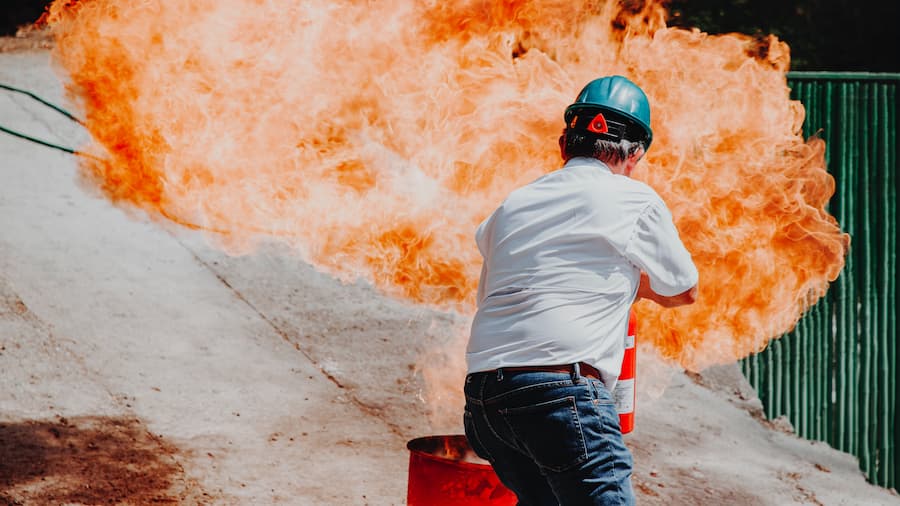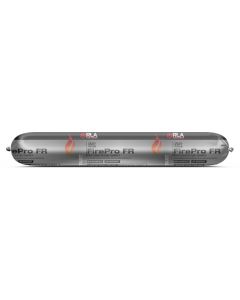When to Use Fire Resistant Sealants

Constructing buildings that are resistant to fire involves a combination of the right materials and the right design.
Buildings are commonly designed to contain the spread of fire by both active and passive means. This means that in addition to active systems like sprinklers, passive systems such as design specifications and materials are utilised. These include ‘sectioning’ designs so that fire is contained and slowed as much as possible, as well as materials that are tested and proven to resist fire.
Specialist fire engineers are skilled in reviewing and assessing buildings to ascertain whether they meet fire safety requirements. Always consult a fire engineer before selecting fire resistant sealants, foams and epoxies, or any other building materials such as boards or insulation.
Standards and guidelines for fire resistant sealants
When it comes to building products, non-combustible materials are always preferred. When safety guidelines are not taken into account, fires can spread exponentially causing extensive harm.
Australian Standard 1530.4 Methods for fire tests on building materials, components and structures Fire-resistance test of elements of construction is used to test many building consumables. However, there are many other codes from the Australian Building Codes Board and other regulatory bodies that should be consulted in the design and engineering stages.
Organisations such as the Fire Protection Association of Australia and the CSIRO provide guidance material for fire resistant building materials.
There is a range of information and literature on fire resistant building materials such as cladding and plasterboard, however let’s take a look specifically at the different types of fire resistant sealant available on the market.
Fire resistant building sealants
Fire resistant sealants are sometimes referred to as intumescent sealants. Intumescent means that the sealant swells when heated, therefore providing a tighter gap seal, and better protection for the building materials underneath it.
For products to be classed as fire resistant they need to be independently tested by an approved fire authority. Then, the fire resistance rating provides the duration of fire exposure for which the anchor product is qualified. These fire resistant sealants are sealing joints in concrete or masonry that must have a fire rated resistance to Australian Standards.
Products such as Aftek Fyreflex and Firesound from HB Fuller give a fire rating in hours in their technical data sheets. This means they have been tested for fire resistance up to (for example) 4 hours.
Products such as Aftek Fyreflex expand when exposed to fire, forming an inorganic plug in joints and voids. This helps to prevent the fire transmitting across partitions in the building.
Fire retardant silicone such as Sika Firerate serves a similar purpose, providing a fire barrier with its inorganic acrylic fillers.
Expanding foam can also have a fire resistance level. Foams such as HB Fuller FulaFoam is fire resistant for 3.5 hours and additionally, provides high acoustic insulation. Its airtight seal forms an efficient barrier against smoke.
Epoxy products for filling larger holes in concrete and brick can also be fire rated. Pure 150-Pro Epoxy Injection offers 2 hours fire resistance.
Fire resistant products available from Jaybro
Fyreflex fire Rated Sealant
- Water-based acrylic sealant
- Suitable for use in internal and external expansion joints a
- 4 hour fire rating to AS1530.4
- Exceptional UV and water resistance
- Excellent flexibility, non-slump properties and ease of application
- Good for internal or external applications
HB Fuller FireSound Fire Rated Acoustic Sealant
- Fire rating for gaps up to 50mm
- Up to 4 hour fire rating (AS1530.4)
- Excellent acoustic properties (STC 65)
- Good flexibility; +/- 20% joint movement capability
- Paintable
- Intumescent; expands when exposed to fire or extreme heat
FulaFoam™ Fire Resistant Expanding Foam
- Fire-resistant polyurethane expanding foam (Tested to AS1530.4)
- Efficient seal against smoke
- High bond strength
- High thermal and acoustic insulation
- Does not contain CFC’s or H-CFC’s
Take a look at our sealants section to shop for FR sealants online.
Remember - always consult a fire engineer before selecting a product for use in a fire rated application. This information has been provided as a guide only.
 Sign In
Sign In 


